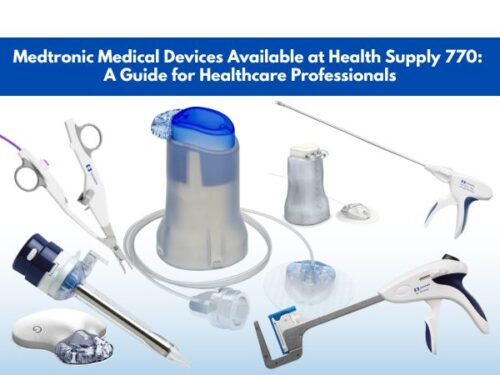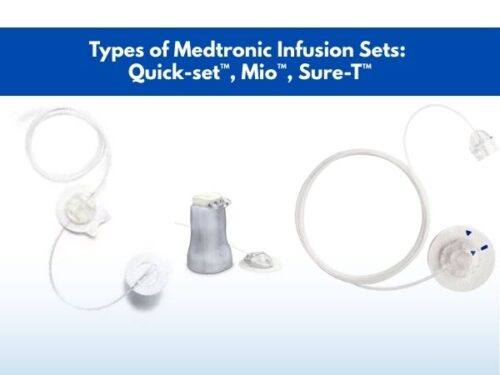Combatting Necrotizing Fasciitis: The Critical Role of Medical Supplies in Diagnosis and Treatment

When it comes to severe bacterial infections, few are as terrifying and life-threatening as Necrotizing Fasciitis, colloquially known as the ‘flesh-eating disease’. Rapid in its progression, this rare infection requires swift identification, timely intervention, and specialized medical supplies to ensure effective treatment. While healthcare professionals often grapple with such medical emergencies, the tools and procedures at their disposal play a pivotal role in patient outcomes.
This article delves deep into understanding Necrotizing Fasciitis, its symptoms, diagnostic tools, and the vital role that medical supplies play in its treatment, emphasizing the critical interplay between advanced healthcare practices and the tools that support them.
What is necrotizing fasciitis?
Necrotizing fasciitis (NF), also known as flesh-eating disease, necrotizing fasciitis, or necrotizing soft tissue infection (NSTI), is a rare but fatal skin and soft tissue infection (SSTI) caused by bacteria.
As the name suggests, necrotizing refers to death while fasciitis means the inflammation of the subcutaneous tissue called fascia. Causative agents of the disease majorly include group A Streptococcus (GAS), Streptococcus pyrogens, and Staphylococcus aureus.

Signs and symptoms of necrotizing fasciitis
Pathogens of necrotizing fasciitis make an entry into the body through cuts, burns, wounds, abrasively damaged skin as well as through dermis affected by insect bites.
As the disease spreads at a faster rate and is contagious, it is essential to look for its signs and symptoms earlier to make a timely diagnosis.
Some of the signs and symptoms of necrotizing fasciitis resemble those associated with flu and have been given below:
- Pain and inflammation in the affected area
- Body pain
- Nausea
- Chills
- Diarrhea
- Fever
- Dizziness
- Extreme weakness
- Malaise
- Dehydration
- Intense thirst
- Redness or discoloration of the skin
- Formation of ulcers or black spots on the skin
- Blood or fluid-filled blisters
- Altered blood flow
- Hypotension i.e. decreased blood pressure
- Necrosis or tissue death
- Sepsis

Treatment options
Once diagnosed, necrotizing fasciitis can be prevented from further spreading by starting the treatment earlier. These therapeutic options include the following interventions:
- Surgical removal of dead tissue is required. At least 3 surgeries are to be conducted to completely get rid of the necrotized tissue.
- Rational administration of antibiotics including penicillin, ampicillin, and clindamycin, along with other recommended intravenous (IV) fluids is necessary.
- Surgeries like skin grafting or plastic surgery are also recommended to normalize the texture of the affected area.
How to prevent necrotizing fasciitis?
Due to the unavailability of a vaccine for the prevention of necrotizing fasciitis, it is impossible to fully contain the infectious agents.
However, apart from medical interventions, the adoption of certain hygiene practices can significantly reduce the likelihood of getting an infection.
According to the Centers for Disease Control and Prevention (CDC), the following measures should be adopted:
- Washing hands with soap and water minimizes bacterial transfer. In case of absence of this option, sterile disinfectant wipes as well as alcohol-based hand rub can be used.
- Taking care of a wound is essential. Wound dressing should be used to hinder the contact between the exposed skin tissue and the environment.
In addition, by avoiding swimming pools, hot tubes, or other natural water bodies, one can prevent a wound from getting affected by infection-causing bacterial entities.

Necessary medical supplies/equipment for diagnosis, treatment, and prevention of NF
Handling a case of necrotizing fasciitis requires facilitation at multiple ends as the disease is hard to treat.
Therefore, various kinds of diagnostic tools along with multiple types of medical supplies, equipment, and devices during and after the surgery are needed.
Moreover, the prevention of necrotizing fasciitis also requires certain interventions which can be achieved by using some commonly used medical supplies.
All of these medical supplies as well as the equipment have been summarized in the following table:
| Supplies/equipment employed for diagnosis | |
| Staining solutions and reagents | Needed for staining the bacteria in the sample taken from the patient in order to detect the causative agent. |
| Biopsy needles | Needed to take tissue samples from the patient. |
| B.P. apparatus | Used for taking the blood pressure of the patient. Extremely low B.P. indicates necrotizing fasciitis. |
| CT scanners or MRI machines | Employed to detect subcutaneous edema or tissue gas. |
| Supplies/equipment employed for treatment/surgery | |
| Sterile dressing | Needed to cover the skin or affected area after surgery. |
| Negative pressure wound therapy (NPWT) device | Helps in wound irrigation, and prepares the skin for a wound graft. |
| Hyperbaric oxygen therapy (HBOT) equipment | Artificial way of providing 100% pure oxygen to the patient to ease the breathing process. |
| Personal protective equipment (PPE) including headband, eye protection, gloves, gown, etc. | Needed for the healthcare staff to protect them from acquiring infection. |
| Topical antimicrobial wound dressing | Used to reduce bioburden as well as the risk of surface contamination. |
| Supplies/equipment employed for prevention | |
| Wound dressing | Required to cover the damaged skin to prevent the penetration of infection-causing bacteria into the body. |
| Alcohol-based wipes | Needed to clean hands and skin to protect one’s self from all kinds of infections including necrotizing fasciitis. |
All of the above-mentioned medical and surgical supplies are available at Health Supply 770 at the most affordable prices. Each item is delivered after complete assurance of quality to enhance customer satisfaction. Moreover, their 30-day money-back guarantee makes the choice easy for the buyer. Do check their website to place an order.
Guidelines for healthcare facilities
Healthcare providers who are dealing with patients of necrotizing fasciitis should follow the following guidelines to prevent themselves as well as their patients from the future harms of the disease:
- Personal protective equipment should be used to avoid getting infected.
- Instruments used on a patient during surgery as well as in the operating room should be properly sterilized afterward.
- Medical supplies employed in one surgery should be discarded immediately. For every new surgery, sterilized medical instruments should be available in the correct amount.
- It should be made sure that all of the healthcare staff dealing with NF patients is well-equipped with proper knowledge of protecting themselves.
Conclusion
Necrotizing fasciitis is a rarely occurring infectious disease that needs proper care and various medical interventions to get rid of. A physician needs to perform surgery once the condition has been properly diagnosed.
Furthermore, extreme care is required so that the surgical wounds won’t get infected. Thankfully, various medical supplies and equipment have eased the job for the healthcare staff.
Purchasing these supplies from trusted sources like Health Supply 770 ensures the in-time provision of high-quality goods at the most suitable prices.



















